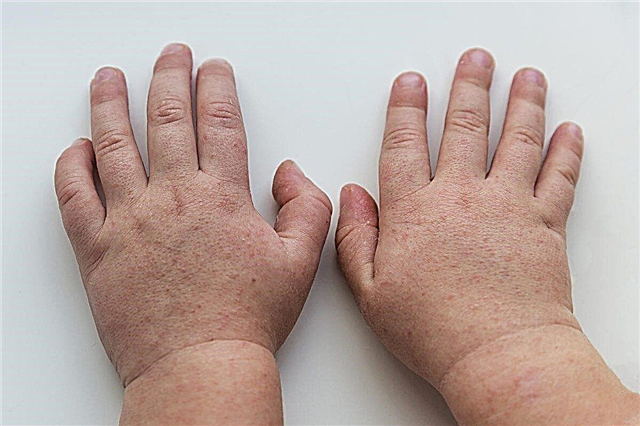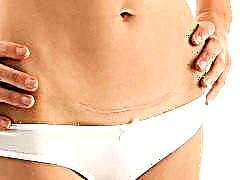
Discharge after childbirth and caesarean section are very similar. Many women mistakenly refer to them as profuse postpartum periods. This definition is incorrect in principle, because discharge after surgery has a completely different mechanism of occurrence. The question of why they occur after a cesarean section does not worry women so often. But the question, when will they end, is very burning. In this article, we will tell you how long the discharge lasts after surgical delivery and how to understand if complications have occurred.
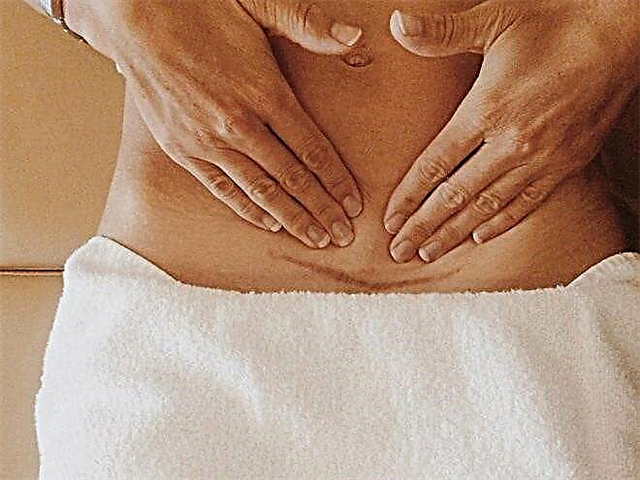
What is the discharge associated with?
It does not really matter in what way the woman gave birth - both after physiological childbirth, and after the operative ones, so-called lochia (postpartum discharge) come out of the genitals. They are a sign of the reverse development of the uterus, and this process is quite complex and lengthy.
During pregnancy, the uterus grows and increases in size, this growth is quite intense. As a result, a small female reproductive organ, the weight of which does not exceed 50-70 grams, increases by more than 500 times by the time the baby is born. Since the uterus is a muscular organ, its smooth muscles are stretched, due to which such an impressive increase occurs.
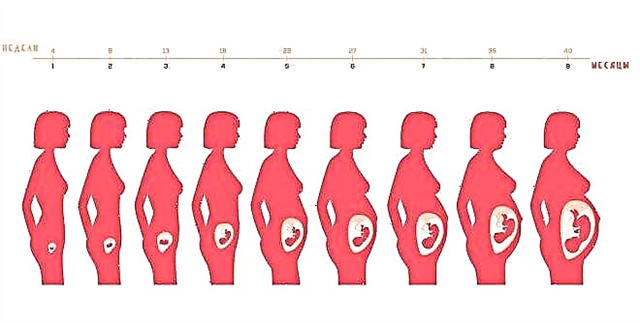
After giving birth, it should shrink to its previous size. But this does not happen overnight. Both after childbirth and after cesarean in the first hours, the uterus remains large, but already has an elongated shape and strongly resembles a deflated ball. Contractions of the uterus contribute to the release of its internal contents, that is, lochia.
The placenta, which performed nutritional and protective functions for the child, is separated from the wall of the uterus, to which it has managed to grow tightly with a network of blood vessels in nine months. During childbirth, the "child's place" is born on its own, and during operative childbirth, the surgeon takes it out after the baby is taken out and the umbilical cord is cut off.
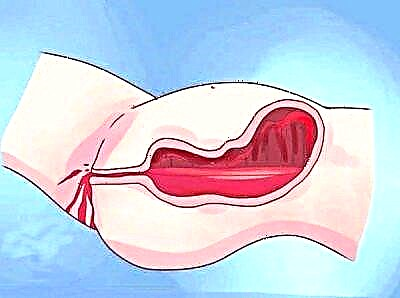
In both cases, the network of vessels, which has already become a link between the female body and the baby, is disrupted. Bleeding after childbirth is associated with this. With a caesarean section, the situation is further complicated by the presence of a surgical incision in the uterine wall. An incision is a wound that additionally bleeds.
This determines the amount and color of discharge after a cesarean section. They differ from the usual postpartum ones. Lochia after cesarean is more abundant, they may contain more blood clots. From time to time in the first few days, lochia will intensify, this is due to periods of active contraction of the uterus. The woman will be given contraction drugs because without them, the scarred uterus will involution more slowly.
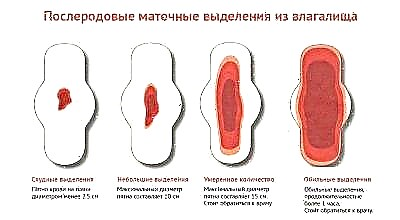
The discharge in the hospital is closely monitored by medical personnel, since the nature of the lochies can tell the doctor a lot. At home, after discharge, the woman will have to observe the discharge on her own. This is very important so that you can pay attention to possible complications in time, if any.
Duration is normal
In the first 8-10 hours after the operation, a woman must observe strict bed rest, after which it is imperative to get up, sit down, start walking, so that stagnation does not occur. Profuse bleeding usually lasts no more than five days. At the end of the first day, the edges of the wound on the uterus begin to stick together, fibrin filaments help stop bleeding at the placenta attachment site. Therefore, the very next day, blood clots appear in the secretions. He doesn't have to scare a new mom. They mean that hemostasis is normal, and the processes of blood coagulation and rejection of blood clots continue to proceed correctly.
When the uterus begins to contract, the clotted discharge increases. So that a woman does not feel acute pain, in the first three days she is injected not only with reducing drugs, but also with painkillers. By the fifth day, the discharge changes its consistency and composition. Now, pure bloody lochia is replaced by discharge with an increased content of serous serum. On the pad, it may look like a slimy ichor.
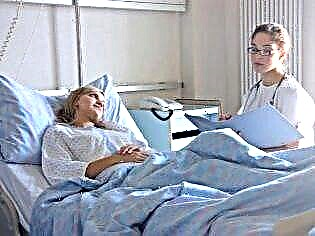

After a week, the discharge becomes even more mucous - the cervix begins to produce a large amount of cervical mucus, as the process of restoring the endometrium (the inner layer of the reproductive female organ) begins. At about the same time, women may find brown blotches in their secretions, resembling small worms in their appearance. These are the tips of the surgical suture material that did not enter the uterine tissue directly, and therefore, as the internal scar heals, they are rejected and removed by the female body to the outside.
4 weeks after the operation, the number of lochia is significantly reduced, some may have a brownish daub. Moderate in volume and uniform in consistency yellowish discharge without a pungent and unpleasant odor are also considered normal. By the 8th week after the operation, the discharge becomes transparent, gradually they return to their normal state.
It is believed that the normal duration of the continuation of excretion after a cesarean section is 2 months, but shifts in the timing of 2 weeks in one direction or another are permissible.
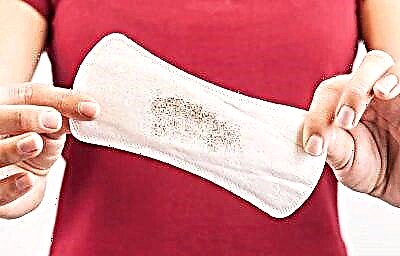
Deviations
Caesarean section in itself is always associated with the risks of possible early or late complications, moreover, it is a gross interference in the order of things established by nature, and therefore the load on the female body in the recovery period is simply colossal. While in the hospital, early complications usually become noticeable, which are manifested by profuse lochia, bleeding due to impaired hemostasis of a woman, due to injury of the vascular bundle during dissection, as well as an increase in temperature and a change in the color and odor of secretions when a wound or cavity is infected uterus.

If the uterus does not contract well enough or does not contract, the bleeding is prolonged and uniform, it does not intensify or stop. Sometimes the discharge stops suddenly after a few days. Such situations require immediate medical attention, and it will certainly be provided to the postpartum woman. After being discharged home, the responsibility for controlling the discharge falls entirely on the shoulders of the woman. What situations should you pay special attention to? Any that do not fit into the norm. Here are just a few reasons to visit your doctor immediately:
- the bloody discharge stopped, but after a few days it began again, they are quite abundant;
- blood clots reappeared 10-12 days after the operation;
- high body temperature has risen or low-grade fever lasts for several days;
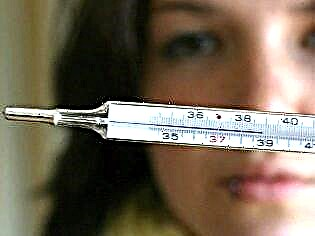
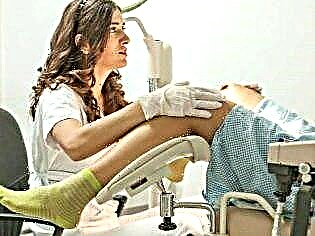
- there is very little discharge in the first days or they completely stopped 1-2 weeks after surgery;
- a substance of green, gray, brown, black color with an unpleasant odor is separated from the vagina;
- lochia has been going on for more than 10 weeks and does not end;
- in the discharge, the woman notices flocculent inclusions, the discharge has become very thick, itching appeared in the perineum;
- severe abdominal pain is observed;
- bleeding or other discharge comes not only from the genitals, but also from the area of the external suture on the abdomen.

Pink mucous or watery discharge a couple of weeks after surgery and later may indicate a difficult healing of the internal scar. This happens with autoimmune rejection by the woman's body of the suture material used by surgeons, as well as with the early onset of sexual activity after surgery. Heavy yellow and green discharge at any time after surgery is a sign of an overt infection, most likely purulent. Usually, their body temperature rises.
Watery discharge, almost colorless and quite abundant, can be an outgoing transudate if the blood supply to the uterus is disturbed, and thick white discharge with flakes can also indicate imbalances in the vaginal microflora and thrush manifesting after surgery. In all these cases, a visit to a doctor is mandatory. Self-medication is unacceptable.

Tips
Here are some important tips for women who have given birth.
- In the maternity hospital, use only sterile hospital liners for the first three days. No commercial pads, because they do not guarantee that pathogenic microflora will not enter the vagina.
- When washing in the hospital and after discharge, you should avoid getting water into the vagina, since this increases the likelihood of infection. Also, you cannot douche.
- Gaskets for the separation of lochia after a cesarean section should be changed more often than with regular menstruation. Liners in the hospital - every three hours, sanitary pads at home - every 2-3 hours.
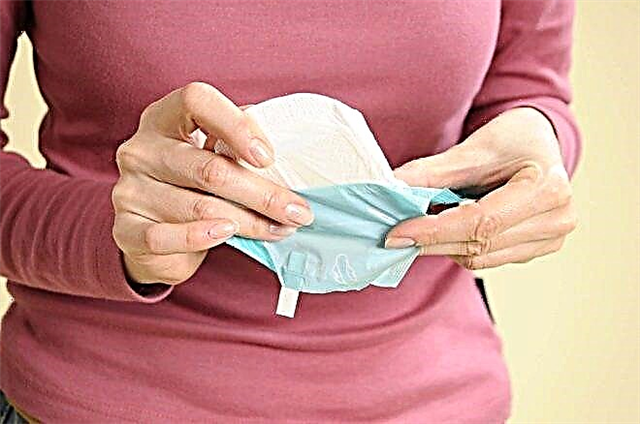
- It is strictly forbidden to use tampons instead of pads.
- Sexual life can only be lived at the end of the discharge in the absence of other complications, that is, not earlier than 2 months after the operation.
- It is forbidden to lift weights over 3-4 kilograms, squat, jump, fall. If such actions were nevertheless committed, and then the discharge increased or their nature changed, you should immediately consult a doctor.

Reviews
Sharing their experience on the Internet, many women forget that they had an individual pregnancy, unlike others, childbirth also had its own characteristics. Therefore, the recovery process after a cesarean section cannot be the same for everyone. The above norms are conditional and rather indicate the order of changes than clear terms. Nevertheless, women continue to ask each other how long the discharge lasted, and get completely different answers.
Most women claim that the discharge has stopped after 6-7 weeks. There are those at whom they stopped 30 days after the operation. Abundant discharge usually does not last long, but scanty and smearing sweat can be annoying for a long time. Experienced mothers advise to drink more liquid with such meager lochia. This, they said, helps the residue drain more quickly.

For information on recovering from a cesarean section, see the next video.

